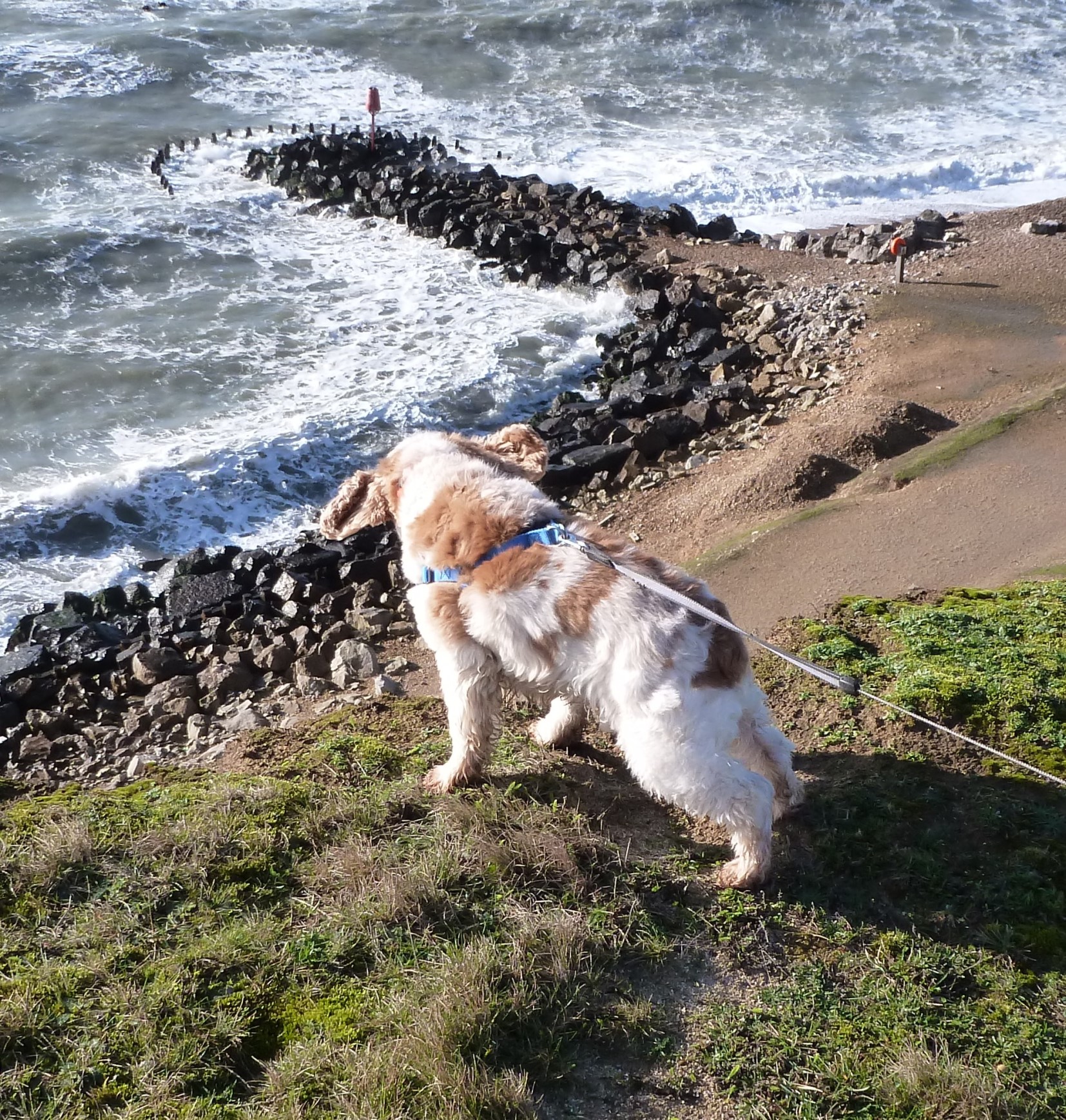|
|
||||||||||||||||
|
Christchurch and District Model Flying Club |
|
A Slope Lift Assessor All slope soarers will have stood on the edge of a hill pondering over those vital questions such as is there enough lift, do I need ballast, is the wind on the slope? In the absence of the first volunteer to launch a disposable foamie, birds such as gulls and crows can give some indication. But remember that they are much more efficient than your models and, as a final insult, can just start flapping to get out of trouble, often leaving the poor pilot with the long walk of shame to collect their model. I reckon birds often do it on purpose…. So let me introduce to the ultimate slope lift assessment device – a spaniel.
Most spaniels have ridiculously long ears, known, I am reliable informed, as leathers, which appear to have some aerodynamic properties. The device is easy to use: simply encourage them to stand on the edge of the slope and watch the said ears. For safety reasons you must remember that spaniels were last in the queue when brains were handed out, so attaching the assessor to a safety harness is a must to prevent them leaping off if they spot a rabbit at the bottom of the slope. Reading the ears is easy:-
· Ears hanging down – lightweight soarers or electric assist only. · Ears horizontal – lovely lift, most models will fly. · Ears vertical – heavyweights or ballast required. · One ear up, one down – wind off the slope, beware. The drawback to this device is their expensive upkeep – vet bills are ruinous - and the continuous maintenance required in the form of long walks. Unfortunately, you can’t just switch them off and chuck them in the bottom of your flight box….. |
|
Who sent me this gem? I can’t remember, but if you would like to get in touch, I’ll buy you a pint at the next meeting - Ed. NOT YOU, Martin! STOP PRESS - Alan Butterworth has owned up - thanks Alan! |
|
[Home] [Chairman's Chatter] [Editorial] [Club Meetings] [Instructors] [Fun Cub] [Goodbye Terry] [Slope lift] [Model Shops] [Chilliwack 2012] [Results] [Club meetings] [tailpiece] |
